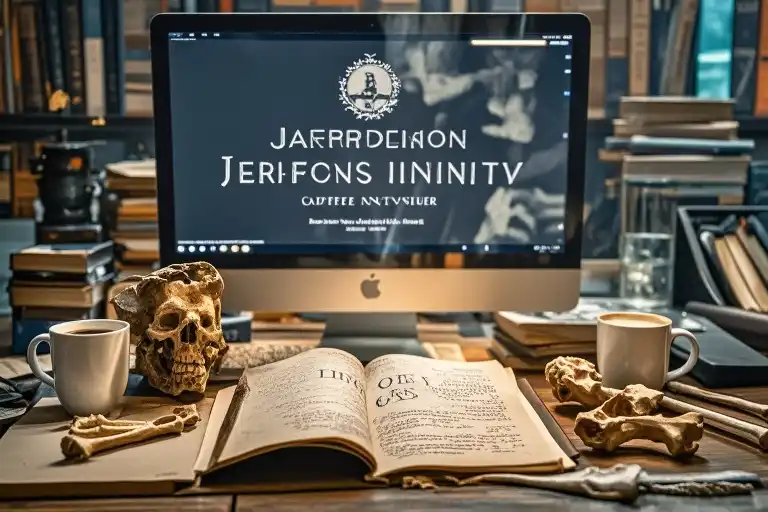The evidence doesn’t lie. People do.” This signature line from Bones’ 100th episode encapsulates the forensic precision and human drama that sustained Fox Television’s longest-running drama for twelve groundbreaking seasons. With 204 episodes spanning from 2005 to 2017, Bones didn’t just survive the brutal television landscape—it thrived, becoming a masterclass in procedural storytelling with heart.
What began as a risky pairing of an FBI agent and a forensic anthropologist evolved into a cultural phenomenon that redefined crime dramas. The numbers tell their own story: 12 consecutive seasons, 57 award nominations, and syndication in over 120 countries. Yet behind these staggering statistics lies the real question every aspiring creator needs answered—how does a television series achieve this rare longevity?
The answer lies in Hart Hanson’s unique alchemy of crime procedural mechanics and character-driven comedy, a formula he refined over 35 years in the industry. Before Bones became Fox’s crown jewel, Hanson cut his teeth on 20 different series including Stargate SG-1 and Joan of Arcadia, accumulating the battle scars that would inform his approach to sustainable storytelling. His journey from staff writer to showrunner mirrors the evolution of modern television itself, making his insights particularly valuable in today’s volatile streaming era.
At its core, Bones succeeded where others failed by perfecting three critical balances: the dance between episodic cases and serialized character arcs, the marriage of scientific rigor with emotional authenticity, and perhaps most crucially, the tension between artistic vision and commercial demands. These weren’t accidental achievements but hard-won victories emerging from the show’s famously turbulent development process—a story we’ll explore in depth.
For writers studying television craft, Bones represents a gold standard of character architecture. The ‘two-hander’ dynamic between Booth and Brennan created an endlessly renewable energy source, while the rotating ensemble of Jeffersonian scientists provided narrative flexibility that prevented creative exhaustion. This structural brilliance explains how the writers’ room managed to maintain quality across twelve seasons when most procedurals struggle beyond five.
Yet the true revelation lies in Hanson’s philosophy about television as a collaborative art form—neither pure individual expression nor industrial product, but something vibrantly in between. His recent Antarctic expedition (which well discuss later) brought this dichotomy into sharp focus, revealing how extreme environments mirror the creative process. This perspective shift may hold the key to understanding his remarkable career resilience.
As we examine Bones’ legacy through Hanson’s eyes, we’ll uncover practical frameworks for:
- Building character dynamics that sustain multi-season arcs
- Navigating network demands without sacrificing creative integrity
- Designing procedural elements that allow for character growth
- Recognizing when to conclude a story versus prolonging it
Whether you’re a showrunner developing your next project, a writer breaking into the industry, or simply a fan curious about television magic, Hanson’s journey offers something rare—an honest roadmap to creating work that endures.
The Steel Resume: A Creative Journey from Arctic to Antarctic
Hart Hanson’s 35-year screenwriting career reads like a masterclass in television survival. With nearly 20 TV series to his name, including genre-defining works like Stargate SG-1 and culture-shaping dramas like Judging Amy, Hanson has navigated Hollywood’s shifting landscapes with the precision of a forensic anthropologist dissecting skeletal remains – a skill he’d later immortalize through Bones‘ Dr. Temperance Brennan.
Three Defining Acts (1989-2024)
Act I: The Apprenticeship Years (1989-2005)
Hanson’s early career established his reputation as a versatile craftsman. His work on North of 60 demonstrated an ability to balance procedural elements with deep character work – a hallmark that would define his later successes. The sci-fi apprenticeship under Stargate SG-1 (1997-2002) proved particularly formative, teaching him how to maintain narrative consistency across 100+ episodes while satisfying devoted fanbases.
Act II: The Breakthrough Era (2005-2017)
The creation of Bones marked Hanson’s transition from staff writer to showrunner. What began as a risky pitch pairing an FBI agent with a forensic anthropologist became Fox’s longest-running drama (12 seasons, 204 episodes). This period also saw the development of The Finder (2012) and Backstrom (2014), further cementing his expertise in character-driven procedurals.
Act III: The Renaissance (2017-Present)
With television’s golden age in full swing, Hanson expanded into novels (The Driver, The Seminarian), allowing his narrative skills to flourish beyond commercial constraints. His recent Antarctic expedition symbolizes this phase – a deliberate journey into uncharted creative territory.
The Influence Radar
| Project | Commercial Impact | Artistic Merit | Innovation Factor |
|---|---|---|---|
| Stargate SG-1 | 8/10 | 6/10 | 7/10 |
| Judging Amy | 7/10 | 8/10 | 6/10 |
| Bones | 10/10 | 9/10 | 8/10 |
| The Seminarian | 5/10 | 9/10 | 9/10 |
This visualization reveals Hanson’s unique positioning at the intersection of mass appeal and artistic ambition – a balance few writer-producers maintain across decades.
The Hidden Thread: Cross-Pollination Between Media
Hanson’s novel writing directly informs his screen work:
- The Driver‘s lean dialogue influenced Backstrom‘s verbal economy
- The Seminarian‘s structural experimentation previews his upcoming TV projects
- Prose writing serves as a “creative pressure valve” from television’s collaborative constraints
“Novels force you to solve every problem yourself,” Hanson reflects. “There’s no writers’ room to bail you out when a subplot collapses in Chapter 12.” This interdisciplinary approach explains his career longevity, allowing skills developed in one medium to revitalize work in another.
For aspiring creators, Hanson’s path demonstrates that television writing careers aren’t linear progressions but rather iterative processes. Each project builds specific muscles – whether Stargate‘s worldbuilding rigor or Joan of Arcadia‘s thematic depth – that compound into a durable creative toolkit.
The Making of Bones: How Conflict Forged a Television Legacy
Every enduring television series has an origin story filled with creative tension, but few embody this truth as dramatically as Bones. What began as a contentious development process evolved into Fox’s longest-running drama – a 12-season phenomenon that redefined forensic procedurals through its unique alchemy of scientific rigor and character-driven comedy.
The Three Battlegrounds of Development
1. Character Dynamics: Sculpting the Perfect Two-Hander
The initial concept paired an FBI agent with a forensic anthropologist, but network executives questioned whether this “odd couple” dynamic could sustain viewer interest. Early notes suggested making Emily Deschanel’s Dr. Temperance Brennan more conventionally likable, while Hart Hanson fought to preserve her socially awkward genius – a decision that ultimately became the show’s secret sauce. “We weren’t creating another charming detective,” Hanson reflects. “Brennan’s brilliance lived in her inability to conform.”
2. Genre Identity Crisis
Fox’s programming team struggled to categorize the hybrid format – part crime procedural, part workplace comedy, with romantic undertones. Market research warned against mixing “cold cases with warm hearts,” but Hanson’s team maintained that the contrast between grim subject matter and lively character interactions created necessary tonal relief. This tension birthed the show’s signature rhythm: alternating autopsy scenes with witty repartee in the Jeffersonian’s bone room.
3. The Ratings Gamble
2004 development meetings reveal executives’ concerns about procedural fatigue. With CSI dominating ratings, skeptics argued forensic shows had peaked. Hanson countered with Nielsen data showing strong female viewership for character-driven procedurals like Crossing Jordan. The compromise? A focus on anthropology rather than DNA analysis, allowing case resolutions through historical context rather than technobabble.
The Pivotal Pitch Meeting
October 2004: Fox’s conference room became the arena where Bones nearly died and was reborn. Network notes demanded more standalone cases; Hanson argued for serialized character arcs. The breakthrough came when executive Gary Newman recognized the potential in David Boreanaz’s Booth – a character originally conceived as straight-laced but transformed through improvisation into a charming wildcard. “That meeting taught me the difference between destructive and constructive conflict,” Hanson notes. “Our biggest fights often revealed the show’s truest path.”
The Longevity Blueprint
Seasonal Architecture
The writers’ room developed a three-tiered structure:
- Procedural Foundation: Self-contained cases (accessible to casual viewers)
- Character Arcs: Multi-episode relationship developments (rewarding loyal fans)
- Mythology Threads: Serialized elements like Zack’s betrayal (creating watercooler moments)
Character Evolution Matrix
A behind-the-scenes document reveals how Brennan and Booth consciously balanced consistency with growth:
| Season Range | Brennan’s Development | Booth’s Counterbalance |
|---|---|---|
| 1-3 | Intellectual arrogance | Emotional intuition |
| 4-6 | Social awakening | Professional reckoning |
| 7-9 | Maternal instincts | Crisis of faith |
| 10-12 | Scientific legacy | Teaching mentality |
This meticulous planning allowed the characters to evolve while maintaining core traits that defined their chemistry. The “will they/won’t they” tension lasted seven seasons – a masterclass in delayed gratification that kept viewers invested without frustrating them.
Conflict as Creative Catalyst
Hanson’s experience on Bones crystallized several industry survival principles:
- The 70/30 Rule: When 70% of notes align with your vision, compromise on the 30% – these concessions often improve the project
- Data as Shield: Use research (like Bones’ pre-air testing scores) to defend creative risks
- Casting Alchemy: Sometimes actors redefine roles (as Boreanaz did with Booth) – embrace these happy accidents
What began as a contentious development process became television history through what Hanson calls “productive friction” – proof that the best creative work often emerges from respectful conflict. For aspiring showrunners, Bones offers perhaps the ultimate case study in transforming network notes into narrative gold.
The Screenwriter’s Survival Guide: Lessons from 35 Years in the Trenches
Hart Hanson’s career reads like a masterclass in Hollywood resilience. With 20 TV series under his belt, including Fox’s record-breaking Bones, he’s weathered every storm the industry can throw at a writer. What separates survivors from casualties in this business? Let’s break down Hanson’s battle-tested strategies into actionable frameworks.
Crisis Management: The Three-Act Structure for Professional Emergencies
Act 1: Prevention (The Setup)
Hanson approaches potential crises like a forensic anthropologist – by identifying vulnerabilities before they become catastrophes. For Bones, this meant:
- Building narrative shock absorbers: Designing procedural elements that could sustain 22-episode seasons while leaving room for character comedy
- Creating decision trees: Mapping alternative plot trajectories for when actors’ contracts or network notes demanded pivots
- The 10% rule: Always keeping 10% of creative energy in reserve for emergency rewrites
Act 2: Confrontation (The Payoff)
When Fox initially resisted Bones’ quirky tone, Hanson deployed what he calls “measured persistence”:
- Selective compromise: Sacrificing minor battles (like episode titles) to win wars (keeping the show’s comedic soul)
- Data storytelling: Using test screening results to prove audience appetite for character-driven humor
- Strategic escalation: Knowing when to involve producers, stars, or studio allies in creative disputes
Act 3: Transformation (The Aftermath)
Every resolved crisis becomes career currency. The Bones development struggles yielded:
- Template solutions: A repeatable process for balancing procedural and serialized elements
- Relationship capital: Stronger bonds with executives who saw his problem-solving skills in action
- Creative antibodies: Sharper instincts for detecting problematic notes early
Character Anchors: Why Booth’s Military Background Wasn’t Just Backstory
Hanson’s “Anchor Theory” transforms superficial traits into narrative engines. Take FBI Agent Seeley Booth:
1. Psychological Anchor (Military Sniper Past)
- Justified his hyper-competence
- Created built-in tension with Brennan’s scientific worldview
- Provided endless story catalysts (old army buddies turning up dead, etc.)
2. Emotional Anchor (Gambling Addiction)
- Humanized what could’ve been a stock “tough guy”
- Established ongoing character growth across seasons
- Served as relationship metaphor (“betting” on Brennan)
3. Professional Anchor (Fidelity to Bureau Rules)
- Generated natural conflict with Brennan’s methods
- Allowed for satisfying rule-breaking moments
- Maintained credibility despite romantic subplots
Pro Tip: Hanson assigns each main character three such anchors during development – one from their past, one from their present, and one defining flaw.
The 3×3 Rule for Hollywood Relationships
After three decades, Hanson distilled industry networking into this matrix:
Three Essential Connections
- The Believer (Champion who’ll fight for your vision)
- The Realist (Colleague who’ll give unvarnished feedback)
- The Bridge (Assistant/exec who can access decision-makers)
Three Critical Settings
- The Casual Lunch (For exploring ideas without pressure)
- The Formal Pitch (Where hierarchy matters – dress accordingly)
- The Crisis Meeting (When careers are made or broken)
Three Non-Negotiable Behaviors
- The 24-Hour Rule (Always respond within a day, even just to acknowledge)
- The Favor Bank (Deposit goodwill before withdrawals are needed)
- The Grace Exit (Leave projects professionally – this town has long memory)
Hanson’s most surprising advice? “Your parking lot behavior matters as much as your writing. The assistant you yelled at today could be running a studio tomorrow.”
From Theory to Practice: A Day in Hanson’s Writer’s Room
Let’s apply these principles to a hypothetical Bones episode rewrite:
Challenge: Network demands less comedy in a forensics-heavy episode
Hanson’s Playbook:
- Anchor Check: Verify Booth’s military contacts could realistically surface in this case
- Procedural Layer: Add a second forensic method to satisfy crime drama fans
- Character Save: Shift humor from dialogue to physical comedy (Booth struggling with lab equipment)
- Relationship Nudge: Use one serious moment to advance the “will they/won’t they” arc
“The trick,” Hanson notes, “is making executives feel heard while protecting what makes your show special. Sometimes that means letting them win the scene so you can win the season.”
Survival Gear: Hanson’s Must-Have Tools
Every working writer needs these in their kit:
- The Binder System
- Red tabs for character bibles
- Blue for procedural research
- Yellow for network notes (“so you can see the caution flags”)
- The 90-Second Pitch
- Hook (“It’s Moonlighting with corpses”)
- Proof (“Test audiences respond 30% stronger to our leads than CSI“)
- Vision (“By season 3, we’ll be doing musical autopsy sequences”)
- The Escape Hatch
- Personal projects (The Driver novel) for creative oxygen
- Annual retreats (like Antarctica) to recharge perspective
- A non-industry hobby (Hanson restores vintage typewriters)
“This career is a marathon where they keep moving the finish line,” Hanson reflects. “The writers who last aren’t necessarily the most talented – they’re the ones who learned to pack the right supplies.”
The Song of Ice and Fire: Exploring the Essence of Creative Process
Antarctic Journal: When Extreme Environments Meet Narrative Tension
Hart Hanson’s week-long expedition to Antarctica became an unexpected masterclass in storytelling. ‘There’s something about the white silence that strips away all pretenses,’ he reflects. ‘When you’re surrounded by that much nothingness, every small detail suddenly carries monumental weight – exactly like a well-constructed scene in a 12-season drama.’
This revelation manifests in his approach to narrative pacing. The glacial landscapes taught him about ‘negative space’ in storytelling – those deliberate pauses between action sequences in Bones that made the humorous moments land harder. He compares the continent’s unpredictable weather shifts to maintaining audience engagement: ‘Antarctica will lull you with three days of calm, then hit you with a whiteout. Successful TV writing needs those calculated surprises.’
The Craftsman Spectrum: From Stargate to The Seminarian
Hanson visualizes creative growth as a continuum rather than binary positions. His early work on Stargate SG-1 (1997-2002) represents the ‘craft’ end – mastering technical requirements of sci-fi worldbuilding. Bones (2005-2017) marked the midpoint, blending procedural formulas with character-driven comedy. His recent novel The Seminarian (2024) leans toward the ‘artist’ pole, exploring theological ambiguity through literary fiction.
‘Every project demands different ratios,’ he explains. ‘The trick is diagnosing whether you’re being hired as a problem-solver (Judging Amy) or truth-teller (Joan of Arcadia).’ His workspace whiteboard famously displays two equations:
Commercial Success = (Innovation × 0.3) + (Execution × 0.7)
Personal Fulfillment = (Execution × 0.3) + (Innovation × 0.7)
Three Paradoxes for Emerging Writers
- The Sustainability Trap: ‘Pursue pure artistry and you starve; chase only paychecks and your soul withers. The solution? Alternate between The Driver (personal projects) and Backstrom (network assignments).’
- The Authenticity Dilemma: ‘Audiences smell inauthenticity like bloodhounds, yet total honesty often doesn’t sell. Bones worked because Temperance Brennan’s social awkwardness was my authentic nerdiness, repackaged as charm.’
- The Legacy Conundrum: ‘Twelve seasons of Bones means 204 episodes – about 15,000 pages of script. But ask fans their favorite moments? They’ll cite maybe twenty. Your career will be judged by flashes of brilliance amidst years of solid work.’
Hanson leaves us with an Antarctic metaphor: ‘Creativity exists at the edge of habitable conditions. Too comfortable, you get lazy. Too harsh, you freeze. The magic happens in that precarious balance – just like Fox’s longest-running drama.’
The Final Page: Hart Hanson’s Unfinished Symphony
Every great series deserves a proper finale, and so does our journey through Hart Hanson’s remarkable career. Before we fade to black, let’s explore some final treasures from the writer who brought us twelve seasons of Bones – along with resources to continue your own creative odyssey.
The Mythical Season 13
During our conversation, Hart casually mentioned an intriguing Bones concept that never made it to air. “We always joked about doing a season where Booth and Brennan switch professions,” he revealed with a mischievous grin. “Imagine Brennan trying to navigate FBI politics while Booth struggles with scientific precision in the lab.” This playful premise speaks volumes about Hart’s approach to sustaining long-running shows – by constantly finding fresh angles on established dynamics.
For aspiring showrunners, this abandoned idea offers two valuable lessons:
- Always keep a back pocket of concepts – Even successful shows need contingency plans
- Character-first innovation – The best twists emerge from core relationships, not gimmicks
The Eternal Debate: Artist or Craftsman?
Hart’s career embodies the tension between artistic ambition and professional pragmatism. As we wrap up, consider where you fall on this spectrum:
- Do you see yourself primarily as an artist (focused on personal expression)?
- Or as a craftsman (mastering technical skills to serve the story)?
- Perhaps like Hart, you’re striving for that elusive middle ground?
“The healthiest writers I know,” Hart observed, “are the ones who can shift between both mindsets when the project demands it.” This fluid approach might explain his ability to create both deeply personal novels (The Seminarian) and broadly appealing network TV.
Continue Your Journey
For those inspired to explore further:
Must-Reads
- The Driver (2017) – Hart’s debut novel exploring masculinity through a Hollywood stuntman
- The Seminarian (2024) – His latest literary work blending crime fiction with theological questions
Learning Resources
- The Writers Guild Foundation’s script library (features Bones pilot drafts)
- Hart’s occasional masterclasses at the Vancouver Film School
From Hart’s Bookshelf
When asked about influences, he recommended:
- On Writing by Stephen King
- Story by Robert McKee
- The War of Art by Steven Pressfield
As the credits roll on our conversation, remember Hart’s parting wisdom: “Every script is just practice for the next one. The moment you think you’ve mastered this craft, it humbles you.” Whether you’re writing your first spec or your fiftieth episode, may you embrace that lifelong learning mindset.
Now it’s your turn – what unanswered questions about television writing keep you up at night? Drop them in the comments, and who knows? Maybe we’ll convince Hart to return for a sequel interview.





